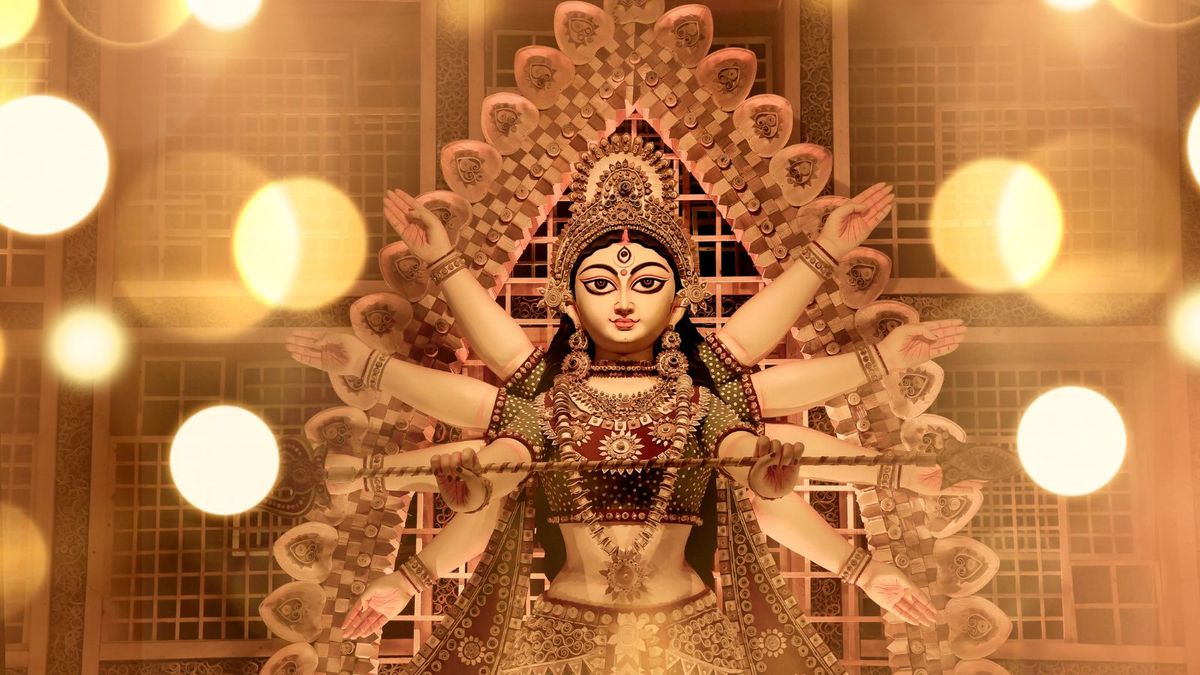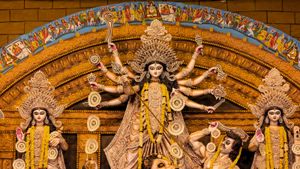With the onset of the festive season comes the much-awaited and vibrant week of Navratri. Celebrating the win of Maa Durga over demons, the week marks the triumph of truth and good over evil.
Goddess Durga, who is worshipped as the manifestation of power in Hinduism is the prime deity of the festival. Over the course of the nine days or nav-ratris, 9 different forms of the goddess are worshipped. It is believed that during these 9 days, the goddess descends on the earth, and each of her 9 forms signifies power but wielded in different ways.
These 9 forms are often best represented by the 9 colours of Navratri. This year, in Navratri 2023 for instance, Shailaputri form, or the daughter of the mountains is represented by orange, while Mahagauri, the fulfiller of all wishes, is represented by purple.
This year, for Navratri 2023, here are the colours associated with the goddess
1. Orange for Pratipada

Day 1 of the Navratri, when the Shailaputri form is worshipped, is signified by the colour orange. The daughter of the mountains, Shailaputri is mighty and zesty. Pratipada or the first day of the Navratri when she is worshipped, the colour that signifies it this year is orange.
2. White for Dwitiya
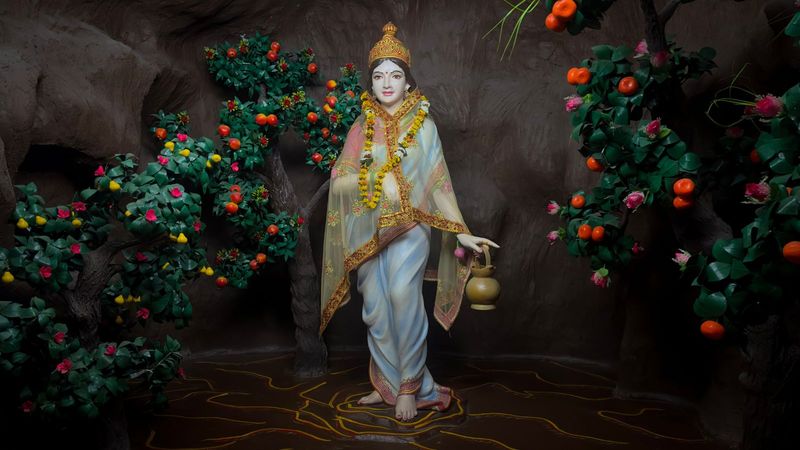
Day 2 of the Navratri or Dwitiya is the day of pristine white. The second day of the Navratri is marked by the worship of the Brahmacharini form of the goddess, who is often depicted clad in white clothes, holding a rosary in one hand and a kamandal in the other, signifying peace, calm and compassion
3. Red for Tritiya

The colour most often associated with the goddess Durga had to make an appearance on the list of the colours of Navratri. The third day of the Navratri or Tritiya is marked by the worship of Chandraghanta form of the goddess. Signifying courage, she is the form that wages war against evil, and is seen as the protector of her devotees, and what colour would be better than red to depict that!
4. Royal blue for Chaturthi
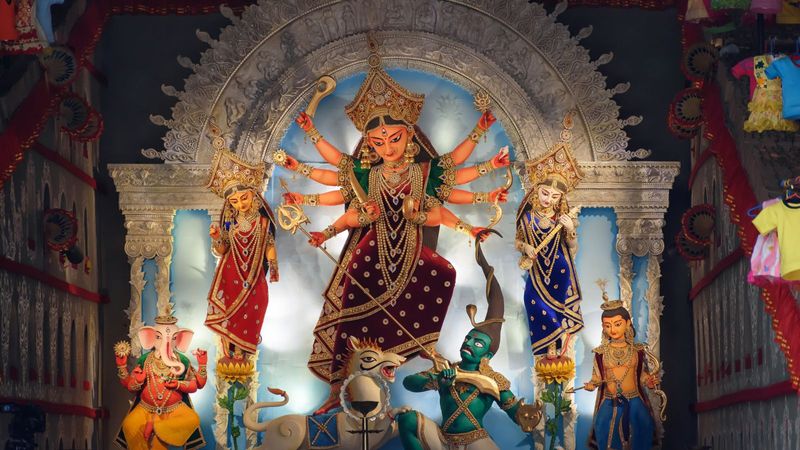
On the fourth day of the Navratris, or Chaturthi as it is called, the form of the goddess that is worshipped is called Kushmanda. The one with eight hands, perched atop a tiger, she bestows health upon her devotees and is considered the creative power of the universe. Royal blue, the colour often associated with calm, depth, and peace, is the colour of Navratris associated with the fourth day.
5. Yellow for Panchami
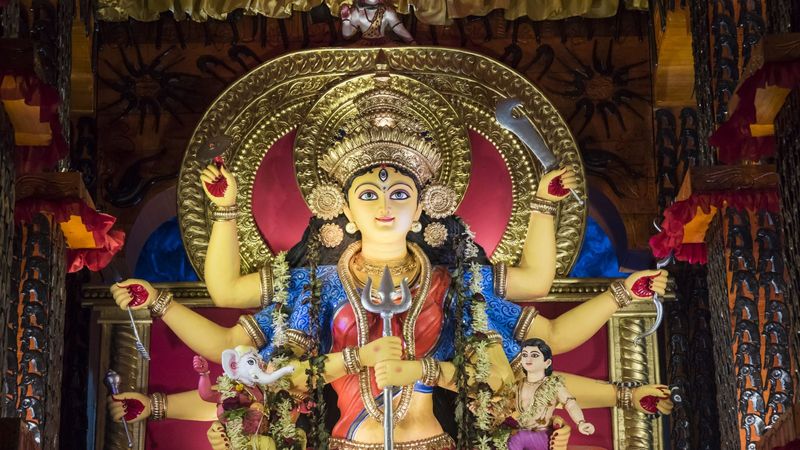
Skandamata, the form of the goddess worshipped on the Panchami or the fifth day of the Navratri represents Durga in a mother form. Striking a balance between being an affectionate mother to her son Kartikeya or Skanda, and the warrior who would fight anything to protect him, this form is represented by the colour yellow in the colours of Navratri.
6. Green for Shashti
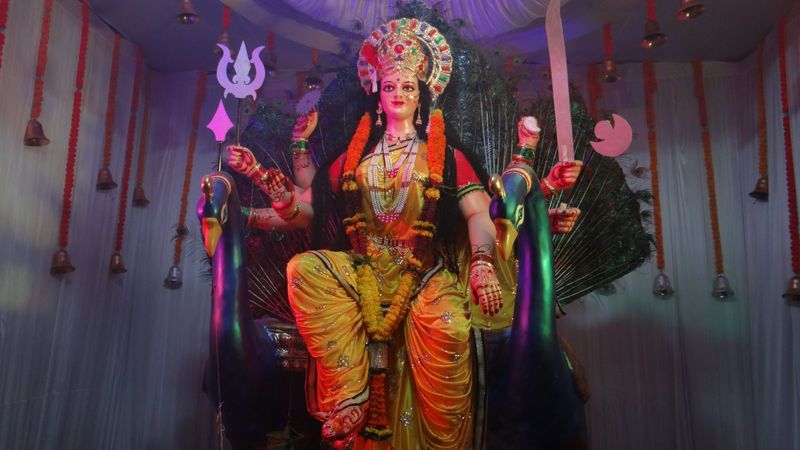
Known to be one of the warrior forms of the goddess, Katyayani is the one who grants wishes. The Navratri colour for the day she is worshipped is green. The colour that best represents growth, security, and prosperity is aptly the one that marks the sixth day of Navratri or Shashti as it is known.
7. Grey for Saptami

The fiercest of them all, with her appearance itself invoking fear, the form that is worshipped on the seventh day of the Navratri or Saptami is Kalaratri. Celebrating the triumph of good over evil, the colour of Navratri that marks Saptami is grey. Reflective, strong, and resilient, it stands for everything the form Kalaratri signifies.
8. Purple for Ashtami
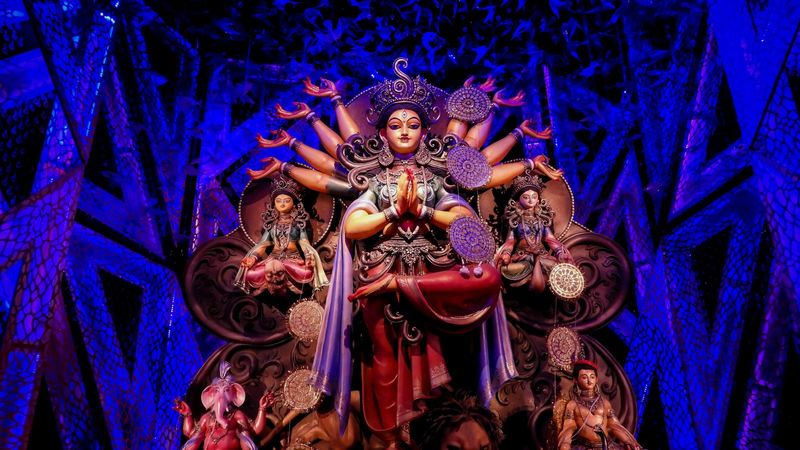
Post the fight for what is right comes the day when Goddess Durga is worshipped as Mahagauri, the form that blesses her devotees with everything they could wish for. Grandeur, and prosperity that are associated with the form Mahagauri are best represented by the Navratri colour for the day, purple.
9. Peacock green for Navami

The last and the final form of the goddess is worshipped on the ninth day of the Navratri, or Navami as it is called. The form Siddhidhatri is often portrayed as perched on a lotus and holding a lotus, a mace, a shankh, and a chakra. Signifying the attainment of divine wisdom, and success, the colour of Navratri associated with Navami is peacock green.


